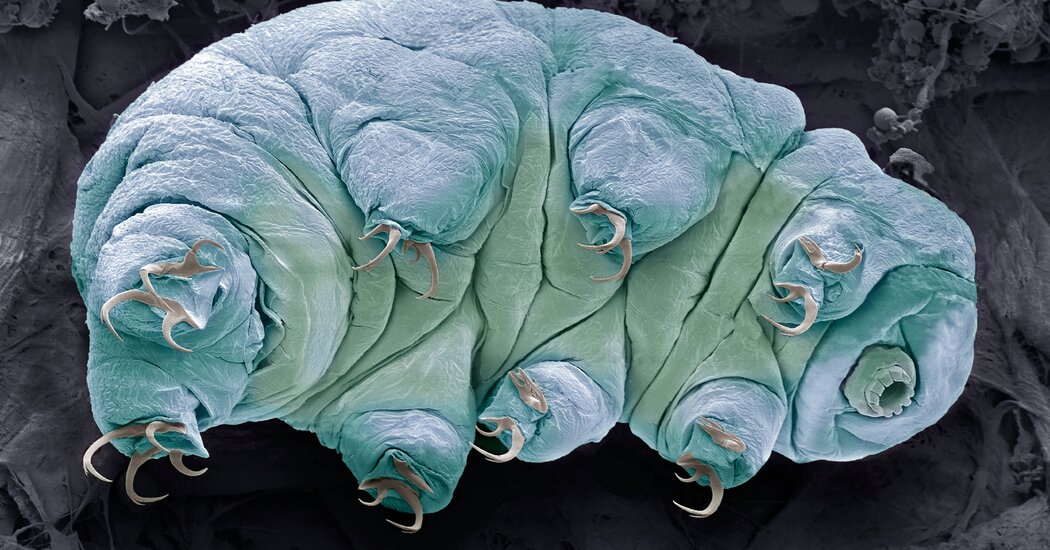New research finds that the microscopic “water bears" are remarkably good at repairing their DNA after a huge blast of radiation.
To introduce her children to the hidden marvels of the animal kingdom a few years ago, Anne De Cian stepped into her garden in Paris. Dr. De Cian, a molecular biologist, gathered bits of moss, then came back inside to soak them in water and place them under a microscope. Her children gazed into the eyepiece at strange, eight-legged creatures clambering over the moss.
“They were impressed,” Dr. De Cian said.
But she was not finished with the tiny beasts, known as tardigrades. She brought them to her laboratory at the French National Museum of Natural History, where she and her colleagues hit them with gamma rays. The blasts were hundreds of times greater than the radiation required to kill a human being. Yet the tardigrades survived, going on with their lives as if nothing had happened.
Scientists have long known that tardigrades are freakishly resistant to radiation, but only now are Dr. De Cian and other researchers uncovering the secrets of their survival. Tardigrades turn out to be masters of molecular repair, able to quickly reassemble piles of shattered DNA, according to a study published on Friday and another from earlier this year.
Removed by mod



